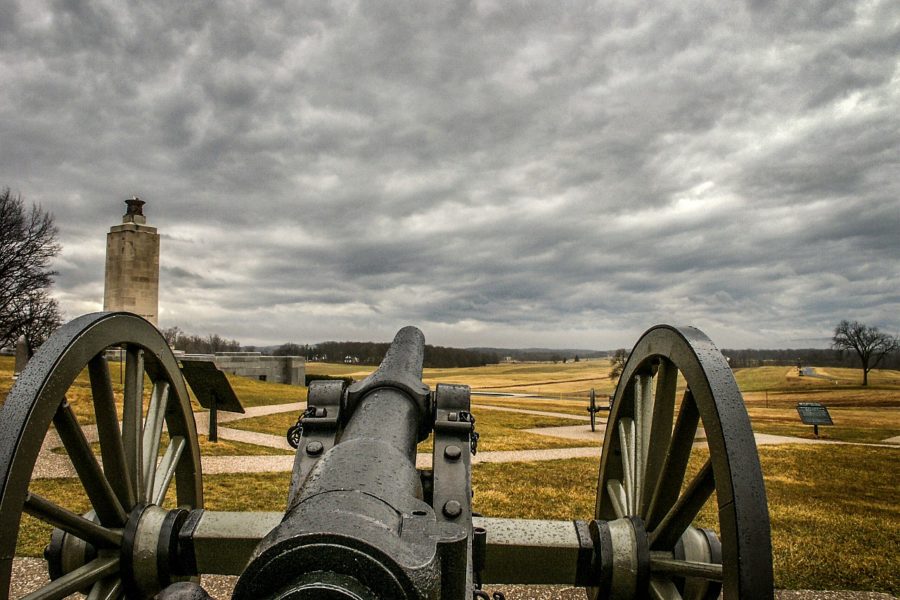Science and war are inextricably linked. Throughout history, many scientific innovations and discoveries have fundamentally changed the battlefield – from antibiotics, which have dramatically reduced the number of soldiers dying from disease, to drones, which have completely changed the way modern wars are fought.
10. Barbed wire

Barbed wire was invented in the 1870s by American farmer Joseph Glidden as a way to deter livestock from escaping from confinement. It was a revolutionary invention for agriculture, putting an end to style grazing cattle, common in the West, and gave rise to closed pastures.
However, its impact on warfare was much more widespread. By the late 1800s, armies around the world were producing vast quantities of barbed wire for its use in creating perimeters and fences. It was used to great effect in wars such as the Anglo-American War. - Boer War , the Russo-Japanese War, and the Spanish-American War. During World War I, barbed wire was used excessively to reinforce heavily fortified positions on the Western Front—a hallmark of that war. Eyewitness accounts suggest that in some places, the wire walls were thick enough to block daylight and even artillery shelling.
9. DDT
Before World War II, it was not uncommon for a fighting army to lose more soldiers due to such diseases , like typhus and malaria, than bullets. It was the first major war in which disease accounted for fewer deaths than combat-related causes, and one of the reasons was the newly discovered pesticide known as DDT.
Discovered by Swiss scientist Paul Muller, who later won a Nobel Prize for it, DDT was so effective at killing disease-carrying fleas and other insects that it was often referred to as a “miracle drug” by commanders and soldiers in the field. First used on the Pacific front, where disease losses were highest, the pesticide soon became a regular part of Allied equipment. DDT was particularly effective in containing an outbreak of typhus that was spreading across Naples , Italy, in 1943-44.
8. Haber-Bosch process
The Haber-Bosch process is sometimes called one of the most important inventions in chemistry. Named after the German scientists who invented it in 1909-1910, it is now a widely used industrial process that combines nitrogen and hydrogen to produce ammonia, which is then used to make things like fertilizer. The process has sparked the proliferation of various types of fertilizers around the world, leading to a dramatic increase in the number of population planets since its invention.
The Haber-Bosch process played an important role in Germany's war effort during World War I, as nitrates were also an important ingredient in munitions production. Since Germany did not have access to global nitrate supplies due to British blockades , this process provided them with a unique home-grown source both food and weapons to sustain the war for more than four years.
7. Morse code
Morse code was invented by Samuel Morse as a method of communication in the 1830s. The original iteration used a pattern of dots, dashes, and spaces to performances alphabet and numbers, although it was later replaced by International Morse Code, a simpler version that also worked with non-English languages. Before the invention of the telephone, Morse code and the telegraph system built on it were the only way to instantly transmit information over very long distances.
Morse code had a profound impact on warfare. For the first time, commands could betransferred units hundreds of miles apart in seconds. This was the beginning of a new type and scale of warfare, in which front lines could be stretched farther than ever before in history. Morse code and the telegraph were particularly useful during World War II, when Allied units used them extensively to exchange coded information .
6. Penicillin

There was a time when even minor cuts and bruises on the battlefield could turn into life-threatening situations. Before antibiotics, infection from diseases like cholera and pneumonia killed as many, if not more, soldiers as the enemy. By some estimates, nearly a third of all military deaths during World War I could be attributed to disease.
That all changed sometime during World War II. While pesticides like DDT helped keep battlefields free of harmful vectors, antibiotics like penicillin kept outbreaks and wound complications at bay. Although it was first discovered by a Scottish microbiologist Alexander Fleming In 1928, the technology for its mass production was developed in USA only after the war began. It was a revolutionary invention that saved countless lives throughout the war: by one estimate, the discovery of penicillin reduced the number of deaths from bacterial pneumonia in wartime from 18% to 1%.
5. Social networks

Social media has had a huge impact on almost every aspect of our daily lives. The ability to quickly generate and distribute information anywhere in the world has changed the way we communicate, for better or worse. Unsurprisingly, it has also changed the modern battlefield, as wars are now broadcast live long before reporters or analysts have time to reach the conflict zone.
While it is too early to tell whether social media could play a decisive role in the outcome of battles, several conflicts, such as the Arab spring " or even the ongoing war in Ukraine, prove that they can become a major factor in conflicts. coming. There is also the possibility that social media itself could become a tool of warfare in the future, as ISIS did with its global recruitment campaigns, conducted almost entirely on channels such as Twitter .
4. Taming a horse

It is difficult to pinpoint exactly when the horse was domesticated. Some studies place it around 6000 years ago into the geographic region known as the Eurasian Steppe, a vast tract of grassland stretching from Hungary and Romania to Mongolia. It was a turning point in human history, as it allowed us to travel and navigate much greater distances.
Horses also had a lasting impact on the battlefield, although only to 900 BC or so, when the first mounted bands of nomadic warriors from the steppes learned to use weapons such as swords and bows on horseback. The ancients Greeks were among the first to encounter horses in combat, which may have been the inspiration for all their centaur stories.
For almost 3000 years Before the advent of tanks and artillery, the horse absolutely dominated the battlefield as shock cavalry replaced heavy infantry as the most feared units on the battlefield. From Mongolia to Egypt and Europe, mounted cavalry and the tactics around it became the deciding factor in most wars as kingdoms or empires that relied on their infantry were quickly overrun by horses. Improvements in equipment , such as the saddle, stirrup and bridle, further increased their effectiveness in combat.
3. Drones

Although drones have been used in wartime, at least since First World War , the modern, lethal version of the drone is a much newer invention. The first lethal drone strike was carried out immediately after on September 11, and since then they have proven their effectiveness in an ever-changing battlefield as insurgencies and irregular warfare have replaced more traditional forms of warfare.
In terms of weapon type, the killer drone can be classified as a kind of sniper , as most modern types can remain in the air undetected for days and carry out their kills with precision. They have changed the way wars are fought, primarily because they don't require actual boots on the ground to fight. Drones are also far more accurate than artillery shells or bombers, although there has been some controversy about their overall accuracy .
2. Radar

While radar—short for Radio Detection and Ranging—was independently invented much earlier, its first military variants were developed in MIT Radiation Laboratory during World War II. It was a game-changing technology that could detect virtually any type of object using radio waves and may have even played a major role in the eventual Allied victory. Although Germany had its own RADAR program before the war, its development was stopped by the end of 1940.
Throughout the war, radar was used in a variety of ways to disrupt the Axis war effort. Land bases could now exactly direct their air defences against incoming Luftwaffe bombers, and this was particularly effective against attacks by German rockets such as the V-1. More sophisticated radar systems were used to provide fighters and bombers with a map image of the terrain miles before they arrived, which was useful during the coordinated aerial bombing campaigns against German and Japanese bases later in the war.
Radar is still an important part of warfare, and modern systems are far more sophisticated than those we had during World War II. It is also now widely used in manycivilians areas such as flight tracking, weather forecasting and navigation.
1. Photography

Photography has been a part of warfare since the mid-1800s. During conflicts like the Crimean War, American Civil War and the Mexican-American War of 1947, photographs were used to give viewers a realistic view of the war. However, at the time, technology was still in its infancy. in its infancy condition. Due to slower shutter speeds and bulky equipment, war photography was limited to photos taken long before or after combat. While great for media coverage, it was of little use on the battlefield.
This changed at the turn of the century, when cameras became smaller and faster. Photography was widely used for reconnaissance and intelligence purposes during World War I. Combined with improvements In other areas, such as communications and aviation, it gave commanders a complete view of the battlefield for the first time in history.
Since then, photography has become increasingly embedded in modern warfare. In addition to changing the way wars are fought, it has also led to a permanent change in the way wars are viewed.













Оставить Комментарий